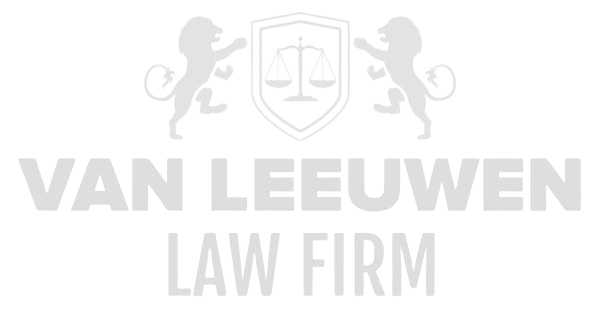The real estate and construction sector represents a complex and indispensable component of societal infrastructure, encompassing the construction, management, and regulation of the physical environment. Within this domain, economic interests, legal frameworks, and technical expertise converge, making the activities of real estate developers and construction companies pivotal in shaping both urban and rural areas. Real estate and construction are not merely economic endeavors; they function as instruments of social organization, spatial planning, and economic stimulation. The acquisition of land, the development of real estate projects, and the actual construction activities form an integrated whole that lays the foundation for a livable, functional, and economically robust environment. The interplay between market forces, regulation, and technological innovation ensures that this sector is constantly evolving, with direct implications for investment decisions, legal structures, and operational execution.
The legal framework governing the real estate and construction sector is intricate and multi-layered, combining national laws, municipal regulations, and European directives. Contracts, building permits, environmental regulations, tenancy law, and liability issues are just a few aspects of a vast legal landscape that companies, investors, and project developers must navigate. At the same time, economic and social dynamics, such as demographic changes, migration patterns, and evolving housing and workplace needs, are inextricably linked to operational practice. Technological innovations, including Building Information Modeling (BIM), smart building systems, and digitalized property management, create new legal challenges, where intellectual property rights, data protection, and contractual liability must be redefined within the context of complex construction projects.
Real Estate Sector: Development and Management
The real estate sector encompasses a wide range of activities, extending from land acquisition to the management of complex property portfolios. At its core, real estate development revolves around identifying valuable locations, planning project developments, and creating structures that add economic, social, and functional value. Land acquisition serves as a strategic foundation, where investors carefully analyze the potential of locations in relation to market developments, infrastructure projects, and future urban expansion. This requires in-depth knowledge of urban planning regulations, environmental impact assessments, and contractual structures that ensure project feasibility and profitability.
The development and investment phase involves a complex interplay between financial structures, technical expertise, and legal certainty. Real estate developers coordinate a network of architects, engineers, urban planners, and financial institutions to realize projects that meet market demands while complying with legal requirements. Financing models range from traditional bank loans to public-private partnerships and innovative investment vehicles, where risk management, return, and long-term value creation are central. The legal framework plays a fundamental role in this process, with contractual obligations, permits, and due diligence procedures forming the basis for responsible and sustainable development.
Property management and leasing represent a separate yet essential aspect of the sector, focused on preserving and optimizing property value. Property managers are responsible for day-to-day maintenance, lease management, and compliance with complex legal and regulatory requirements. Effective property management extends beyond operational tasks; it requires a strategic approach aimed at maximizing rental income, minimizing vacancy, and maintaining sustainable relationships with tenants. Legal issues such as tenancy law, liability, and environmental obligations remain constant concerns, where risk management is an integral component of value creation and the protection of investments.
Construction Sector: From Design to Realization
The construction sector spans a spectrum of activities, from conceptual design to the physical execution of structures. Project planning and design constitute the initial critical phase, where architectural plans are translated into technical specifications and executable construction programs. Architects, engineers, and project managers collaborate intensively to produce designs that are aesthetically, functionally, and economically viable. Detailed cost estimates, timelines, and risk assessments are prepared to ensure the structured and predictable execution of complex projects. Legal and contractual aspects are deeply embedded in this process, with procurement procedures, permitting processes, and liability structures carefully managed.
During the construction phase, the project materializes on the site, requiring coordination among contractors, subcontractors, suppliers, and supervisors. Construction management focuses on optimizing processes, logistics, and safety to ensure projects are executed efficiently and according to plan. Quality control is critical, as poor workmanship, material defects, or non-compliance with building regulations can have significant legal and financial consequences. Safety protocols and strict adherence to regulations are indispensable to guarantee the physical integrity of the project and the well-being of construction personnel.
Innovation and sustainability define the horizon of the construction sector, where traditional methods are supplemented with energy-efficient solutions, circular building principles, and smart building technologies. Renewable energy, advanced materials, and digital simulation methods such as BIM are transforming the way projects are planned, executed, and managed. These innovations introduce new legal challenges, including liability for technological implementation, contractual guarantees, and regulatory compliance. Sustainability is no longer optional; it has become a central prerequisite for financing, permitting, and societal acceptance of projects.
Economic and Social Impact
The real estate and construction sector exerts a profound influence on both the national economy and societal infrastructure. Economically, the sector stimulates investments, employment, and innovation, while simultaneously laying the foundation for other industries by creating offices, industrial facilities, and infrastructure projects. Construction activities generate substantial employment opportunities, ranging from highly skilled engineers and architects to operational staff and specialized labor. Additionally, real estate developments drive economic activity in related sectors such as financial services, legal consultancy, transport and logistics, and technology.
The social impact manifests in terms of living environment, accessibility, and urban dynamics. Real estate development influences housing quality, mobility, and social cohesion. Large-scale construction projects can contribute to urban revitalization, infrastructure improvement, and the creation of public spaces that encourage social interaction. Simultaneously, these dynamics pose challenges, such as ensuring affordable housing, minimizing environmental impact, and preventing social segregation. Legal and policy frameworks are necessary to balance these tensions and guarantee harmonious development of urban and rural areas.
The interaction between economic efficiency and social responsibility represents a constant tension in which the sector operates. Investors, developers, and construction companies must continuously weigh financial feasibility against societal legitimacy. Sustainability criteria, environmental legislation, and social impact analyses are increasingly integrated into project development and construction execution. This comprehensive approach requires in-depth knowledge of legal, technical, and economic aspects, with every decision carefully considered to avoid both legal liability and societal criticism.
Future of the Sector
The future of the real estate and construction sector is characterized by technological transformation, digitalization, and an increasing emphasis on sustainability. Building Information Modeling (BIM), automation, robotics, and smart building systems are revolutionizing the way projects are planned, constructed, and managed. These innovations enhance efficiency, reduce costs, and improve the quality and sustainability of projects. At the same time, new legal questions arise, such as intellectual property rights for digital models, contractual responsibilities in automated construction processes, and compliance with complex data protection and environmental regulations.
Sustainability represents a central theme that influences the entire value chain of real estate development and construction. Energy-efficient designs, circular building materials, and integration of renewable energy sources are no longer optional but mandatory prerequisites for successful project execution. Legal structures, financing models, and permitting processes are increasingly aligned with sustainability criteria, making compliance and risk management core components of project strategy. Innovative techniques and green technologies not only contribute to environmental responsibility but also enhance the economic value and societal acceptance of projects.
The real estate and construction sector remains a complex, dynamic, and strategically essential pillar of the economy and society. Successfully navigating the sector requires an integrated approach, continuously linking technical, legal, economic, and social factors. The future demands foresight, adaptability, and profound expertise to seize commercial opportunities while ensuring environmental and societal responsibilities. Innovation, sustainability, and legal precision will determine success and legitimacy in the decades to come.
Financial and Economic Crime
The real estate and construction sector occupies a pivotal position in the economy by facilitating infrastructure development, creating residential and commercial spaces, and stimulating economic growth. This sector encompasses an extensive range of activities, from the planning, financing, and development of real estate projects to the actual construction, renovation, and maintenance of buildings. While these activities present opportunities for significant economic benefits and investment returns, the sector simultaneously faces substantial exposure to financial and economic crime. The risks include, but are not limited to, fraud, money laundering, corruption, and tax evasion. Managing these risks effectively is critical not only to safeguard the integrity of the sector but also to prevent reputational damage, regulatory penalties, and potential criminal liability.
The complexity of the sector, combined with high-value transactions and the involvement of multiple stakeholders, makes it particularly susceptible to criminal exploitation. Real estate transactions and construction projects often involve large sums of money, intricate contractual arrangements, and layers of intermediaries, all of which can be manipulated to facilitate illicit activities. Regulatory compliance, transparency, and robust internal controls are essential tools in mitigating these risks. A proactive approach to risk management, grounded in thorough due diligence, legal oversight, and adherence to anti-money laundering, anti-corruption, and tax compliance measures, forms the backbone of a secure and trustworthy sector.
1. Fraud in Real Estate Transactions and Construction Projects
Fraud within the real estate and construction sector can have devastating consequences for developers, investors, contractors, and clients alike. In real estate transactions, fraudsters may present falsified or fictitious property documents to sell properties that are not legally owned, do not exist, or are already claimed by another party. Within construction projects, contractors may submit fraudulent claims for expenses that were never incurred or deliberately exaggerate project costs to secure unjustified financial gain.
A concrete example of real estate fraud involves the use of counterfeit ownership documents to sell property that rightfully belongs to another individual. This may extend to the fabrication of fictitious property contracts and manipulation of property registries to create false claims. In construction, fraudulent activity may occur through the submission of fake invoices for materials or labor that were never provided or by inflating costs to extract additional profit. Combating such forms of fraud necessitates stringent control mechanisms, including verification of property documentation, comprehensive due diligence, and the implementation of robust internal audits and oversight. Transparency and integrity in all transactions are indispensable for the prevention and early detection of fraudulent schemes.
2. Money Laundering through Real Estate Transactions
Real estate is frequently utilized as a vehicle for money laundering, enabling criminally obtained funds to be integrated into the legitimate financial system through property investments. The appeal of real estate for laundering stems from the high value of property transactions and the relative ease of transferring ownership. Criminals may leverage real estate to conceal large amounts of cash, integrate illicit funds, and manipulate the financial system.
A practical example involves the purchase of a property with illegally acquired cash, followed by its rapid resale to generate ostensibly legitimate proceeds. Complex ownership structures, including offshore companies or trusts, may be employed to obscure the ultimate beneficiary and conceal the origin of the funds. Preventing money laundering in real estate requires strict adherence to anti-money laundering (AML) regulations, including robust customer identification and verification procedures (KYC), continuous monitoring of suspicious transactions, and thorough due diligence. Reporting unusual activity to the relevant authorities is crucial in combating these illicit practices.
3. Corruption and Unethical Practices in Construction Projects
Corruption and unethical practices remain pervasive challenges within the construction sector, particularly in the context of public procurement and contracting. Practices range from bribing officials to secure permits or contracts to manipulating tender processes for preferential treatment. Corruption increases costs, compromises quality, delays project timelines, and undermines the credibility and integrity of the sector.
An illustrative case is a contractor offering bribes to government officials to obtain construction contracts or accelerate the issuance of building permits. This may also involve circumventing standard tendering procedures through undue influence or manipulating evaluation criteria to secure favoritism. Preventing corruption requires strict compliance with ethical and legal standards, transparent tendering procedures, and fostering a culture of integrity and accountability within organizations. Regular audits, rigorous internal controls, and staff training in ethical conduct and regulatory compliance are indispensable to identifying and mitigating corrupt and unethical practices.
4. Tax Evasion through Complex Structures and Transactions
The real estate and construction sector is equally vulnerable to tax avoidance through the use of intricate legal and financial arrangements. Offshore companies, tax havens, and sophisticated transactional structures are often exploited to minimize or evade tax liabilities. Complex real estate structures and financial arrangements may be employed to obtain tax advantages or circumvent tax obligations.
A concrete example involves a property developer utilizing offshore entities and fiscal arrangements to reduce tax burdens by transferring profits to jurisdictions with lower tax rates. This may also include creative accounting, strategic planning, and the use of complex legal structures to exploit loopholes. Combating tax evasion requires compliance with tax laws and regulations, transparency in financial reporting, and the establishment of lawful tax strategies. Routine tax audits and comprehensive tax compliance programs are essential to preventing and addressing these activities.
5. Cybersecurity Risks in Real Estate Management and Construction Projects
Cybersecurity presents a growing concern within the real estate and construction sector due to the sensitive data and information involved. Cyberattacks may result in the theft of confidential information, financial losses, and reputational damage. The sector is vulnerable to a range of cyber threats, including ransomware, data breaches, and attacks targeting construction management systems.
An example of cybersecurity risk is a ransomware attack on a property management firm, rendering critical property and management data inaccessible until a ransom is paid. Data breaches exposing sensitive information about tenants or transactions to unauthorized parties represent another serious threat. Managing cybersecurity risks requires the implementation of robust security measures, including firewalls, encryption, regular system updates, and comprehensive staff training in cyber awareness. Developing incident response plans and conducting regular security audits are essential for safeguarding sensitive data and preventing cyber threats.
6. Regulatory Compliance and Adherence
The real estate and construction sector operates under a complex web of national and international regulations, encompassing building safety, environmental law, anti-corruption, and tax legislation. Non-compliance can result in legal disputes, financial penalties, and reputational harm. Ensuring adherence to regulatory requirements is essential to mitigate legal and financial risk.
A practical example involves compliance with building codes and environmental laws during construction projects. Compliance extends to transparency requirements in property transactions and measures to prevent tax evasion. Establishing clear compliance procedures, performing regular internal and external audits, and training personnel in relevant regulations are critical components of risk management. Collaboration with legal and compliance experts to remain informed of evolving regulations and best practices is indispensable for safeguarding the integrity of the real estate and construction sector.
Privacy, Data, and Cybersecurity
The real estate and construction sector constitutes a vast and intricate industry encompassing the development, acquisition, sale, rental, and management of property, as well as the construction and renovation of buildings and infrastructure. The sector spans a wide spectrum of activities, ranging from acquiring and financing real estate projects to executing construction works and managing extensive property portfolios. Due to the volume and sensitivity of data processed within these operations, companies in this sector face significant challenges in privacy, data protection, and cybersecurity. These challenges not only carry potential legal and financial consequences but also impact reputational integrity, operational efficiency, and investor confidence.
The nature of the sector’s activities inherently involves complex information flows and interactions with multiple stakeholders, including tenants, buyers, investors, contractors, and regulatory bodies. Data is generated and transferred at every stage—from transaction records to design documents, project schedules, and internal communications. This makes the sector particularly susceptible to breaches, unauthorized access, and cybercriminal activity. Protecting this data requires an integrated approach, combining advanced technological safeguards, regulatory compliance, employee training, and a culture of security-conscious practices across all levels of an organization.
1. Protection of Sensitive Customer and Property Data
Real estate and construction companies process substantial volumes of sensitive data, including personal information about tenants, buyers, sellers, and investors, as well as detailed information regarding property transactions and construction projects. This data is essential for day-to-day operations and for meeting legal obligations related to reporting, compliance, and contractual execution.
A concrete example of this challenge is the risk of data theft, where personal client information or sensitive details of property transactions are exposed through cyberattacks. For instance, an attack on a property management firm could result in the exposure of tenant or buyer data, potentially leading to identity theft or financial fraud. Protecting this information requires advanced security measures, such as encryption, secure storage systems, and robust access control policies. Regular security audits and the implementation of multi-factor authentication are critical in preventing unauthorized access to sensitive information.
2. Security of Construction Project Data and Design Information
During construction projects, vast amounts of data are collected, including design specifications, project schedules, contracts, and progress reports. This information is indispensable for successfully completing projects and fulfilling contractual obligations.
A specific example of this challenge is the risk of data manipulation, where design plans or construction documents are altered by malicious actors. For instance, an attack on a construction company’s IT systems could result in tampered blueprints or altered contractual documents, potentially causing significant project delays or legal disputes. To mitigate this, companies must maintain the integrity of their data through secure document management systems and employ digital signatures for critical documentation. Regular verification of data integrity and the use of encrypted communication channels are equally important to ensure the security of project-related information.
3. Compliance with Privacy Laws and Data Security Regulations
Real estate and construction firms are obligated to comply with numerous national and international privacy laws and data security regulations. This includes frameworks such as the European General Data Protection Regulation (GDPR) and the California Consumer Privacy Act (CCPA), which impose stringent requirements for the processing and protection of personal data.
A concrete example of this challenge is the risk of non-compliance, which can result in fines, litigation, and reputational harm. For instance, failure to adhere to GDPR requirements could lead to substantial penalties and public scrutiny. Compliance requires a comprehensive approach, including the development of privacy policies, execution of data protection assessments, and implementation of robust data security measures. Regular audits and continuous adaptation to evolving legal frameworks are essential to maintain compliance and protect sensitive information.
4. Security of Cloud Solutions and Digital Platforms
With the growing adoption of cloud-based solutions and digital platforms for data storage and management, real estate and construction companies must ensure the protection of data within these environments. This encompasses both customer information and project-related data.
A practical example involves the risk of data breaches or unauthorized access to information stored in cloud infrastructures. For example, vulnerabilities in cloud systems could expose sensitive client or project data to cybercriminals. Companies must select cloud providers that adhere to industry standards for data security and implement rigorous safeguards, including encryption, secure access protocols, and regular system monitoring. Developing a comprehensive cloud security strategy and conducting routine audits are vital to safeguarding information in cloud-based systems.
5. Protection of Intellectual Property and Design Elements
The real estate and construction sector frequently generates valuable intellectual property, including innovative architectural designs, construction methods, and proprietary technologies. These assets are central to a company’s competitive advantage and overall success.
A concrete example of this challenge is the risk of industrial espionage, where competitors attempt to access confidential design elements or proprietary construction technologies. For instance, a cyberattack on a construction company could expose innovative building techniques or architectural concepts. Companies must implement secure systems for managing intellectual property, conduct regular security audits, and cultivate a corporate culture emphasizing information protection. Strategic measures for safeguarding design assets are indispensable for preserving competitive positioning and long-term market advantage.
6. Security of Communication Systems and Internal Networks
Effective communication between companies, clients, and stakeholders requires secure networks and systems to prevent interception or manipulation of confidential information. This includes email, project management tools, and internal corporate networks.
A practical example is the risk of eavesdropping or interception of corporate communications. For example, cybercriminals may target email systems or project management platforms to exfiltrate sensitive information. Ensuring secure communication requires the implementation of encrypted protocols, end-to-end encryption for communications, and protected internal networks. Establishing corporate policies for secure communications and performing periodic security audits are essential measures to maintain the confidentiality and integrity of internal data flows.
7. Employee Training and Awareness
Staff within real estate and construction organizations must be well-informed about privacy, cybersecurity risks, and best practices to minimize human error and ensure appropriate responses to security incidents.
A concrete example is the risk of human error, such as inadvertently sharing confidential information or falling victim to phishing attacks. Employees unaware of cybersecurity risks may unintentionally compromise sensitive data. Companies must invest in comprehensive training programs, regular awareness campaigns, and knowledge assessments to foster a culture of cybersecurity vigilance. Continuous evaluation of training effectiveness is critical to reducing the likelihood of security breaches and ensuring personnel are equipped to respond effectively to threats.
8. Regulatory Compliance and Governance
The real estate and construction sector must adhere to a broad range of regulatory requirements and standards related to privacy and data protection. These obligations encompass general data protection legislation and sector-specific regulations that govern the collection, storage, and processing of sensitive information.
A concrete example involves compliance with GDPR and other relevant privacy laws, which impose stringent requirements for the handling of personal data. Failure to comply may result in severe fines and legal consequences. Companies must develop robust compliance strategies, including detailed policies, standard operating procedures, and regular audits to ensure adherence. Maintaining strong relationships with regulatory authorities and staying abreast of emerging regulations and best practices is essential for upholding compliance and safeguarding the integrity of the sector.















